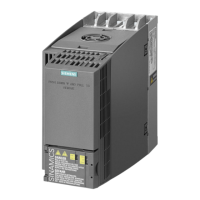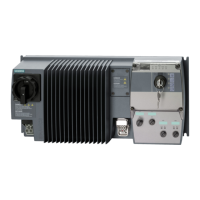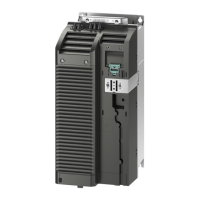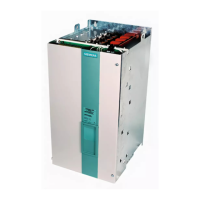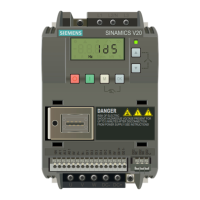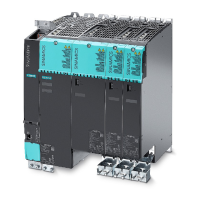52 / 100
Siemens Commissioning Guide CM1G5192en
Building Technologies 7 Applications 29.07.2010
Par. no. Value Parameter function Function selection
P2253(0) 2224 PID setpoint PID setpoint source
P2264(0) 755.0 PID feedback Sets PID feedback source to AIN 1
P2274 0 s PID derivative action time Derivative action time
P2280 5 PID proportional gain Proportional band
P2285 20 s PID integral action time Integral action time
P2306 0 PID acting direction Direct acting loop
P2390 35% Hibernation frequency Hibernation setpoint [%]
P2391 90 s Hibernation timer Hibernation timer in seconds
P2392 -2% Restart PID controller deviation Restart – PID error
r2262 Filtered PID setpoint Display actual setpoint in C
r2272 PID scaled feedback Display actual condenser temperature
r2273 PID error Display actual PID error in %
r2294 PID output Display actual VSD output in %
7.8 Application 8
Condenser tower shall be controlled with the help of the integrated PID controller.
– ON / OFF by LLSV relay interlock
– QBE620 for pressure control
– Indication of operation via relay output 2
Hand
Au to
SED 2
0
I
P
Fn
P(1)
Hz
L1
L2
L3
PE
L1 L2 L3
20
9
5
3
2
SED2
uvw
M
3
21
22
23
24
25
M
UG
28
Fuses
Inspection switch
5192A08en
Error
Com
Run
Com
Relay 1
Relay 2
LLSV relay interlock
Pump
QBE620-P25
HP Sensor
Notes: When the chiller interlock latches, the VSD will start and maintain the pressure setpoint (P2201). If the
output of the VSD drops below the hibernation setpoint P2390, and the hibernation timer has elapsed
(P2391), the VSD will drop from the minimum motor frequency (P1080) to zero, and turn off. When the HP
exceeds the setpoint by 5% (P2392), the VSD will restart and ramp up to maintain the setpoint once more.
This feature allows the minimum motor frequency to be set to protect the motor from overheating and
stalling, while allowing the motor to turn off when not needed to prevent overcooling during the winter
months.
DIP switch setting
ON
1 = Analog input 1
OFF
■ ■
OFF = DC 0…10 V
1 2
ON = 0…20 mA
2 = Analog input 2
OFF = DC 0…10 V
ON = 0…20 mA
